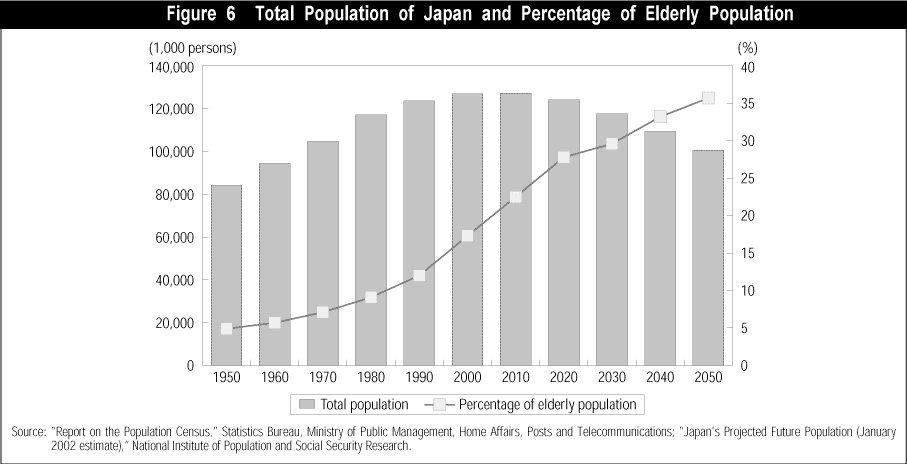| Home > Policy > White Paper, Notice, Announcement > White Paper > FY2003 White Paper on Education, Culture, Sports, Science and Technology >Part1 Introduction2 (1) | ||
In the so-called "knowledge-based society," in which new technologies and information have become the foundation for various social activities including economic activities, it is more important than ever to ensure that the opportunity to receive education is continued following secondary education. Many institutions, possessing various characteristics, provide learning opportunities after the conclusion of secondary education. These include not only course institutions of higher education, but also public vocational training facilities and the education services industry. Higher education institutions are expected to fulfill the most important role as the central axis of these institutes for higher education. In particular, universities bear the role of concentrating not only on education, but as centers of academic research, they need to promote knowledge creation and the means of cultivating people with such knowledge. Other foreign countries also perceive higher education reform, including the reform of universities, to be a national challenge since the background to each of their cases have many similarities (refer to Chapter 4 of Part I ).
In addition, the role of universities and other institutions in Japan has come to be recognized once again as a means to strengthen industrial competitiveness and ensure employment. In particular, in the case of Japan, where an aging society and declining birth rate is progressing at a globally unprecedented rate, it is estimated that by 2050 each 1.5 persons in the productive age population (15 to 64 years old) will have to support one member of the elderly population (over 65 years old) * ( Figure 6 ). In response, it is essential for Japan to enhance the intellectual production capacity of each of its citizens to maintain the country's vitality.

| * Population estimate in 2050 |
For the median estimate of "Japan's Projected Future Population" (January 2002, National Institute of Population and Social Security Research), the total population of Japan in 2050 is estimated to be 100,593,000 people, with 53,889,000 persons between 15 and 64 years old and 35,863,000 persons over 65 years old.
| Back To Top | MEXT HOME |